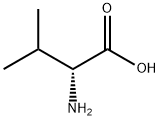On Chemball
My Chemball
+86-571-8627 3270

Huanggang Wellman Biosciences Co.,Ltd.
Huanggang Wellman Biosciences Co.,Ltd.
Main Products:
D-Valine / L-Valine / L-Valine Methyl Ester Hydrochloride / N-Carbobenzyloxy-L-Valine / Dl-Norvaline


D-Valine / CAS 640-68-6
- Overview
- Descriptions
- Sample



